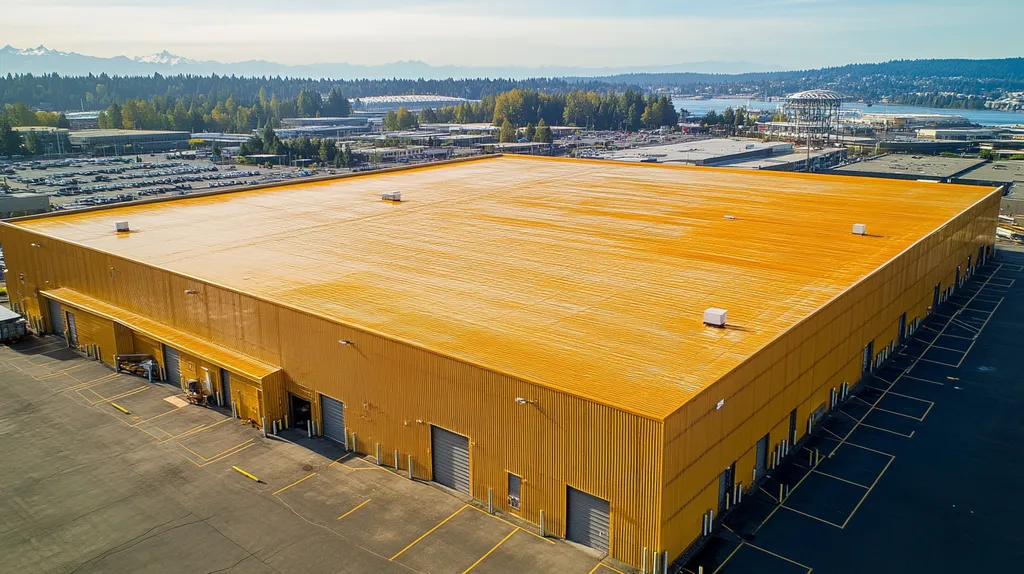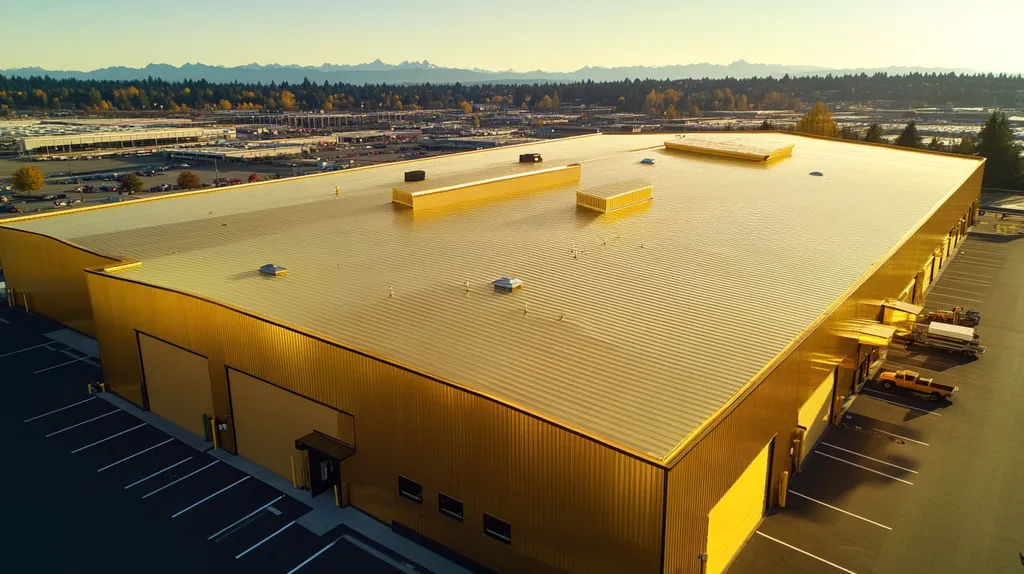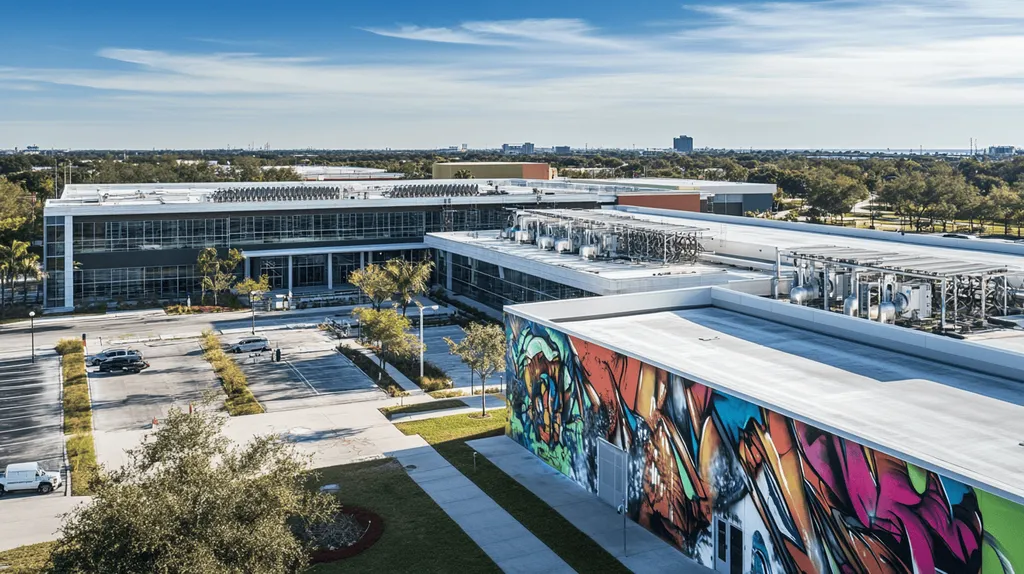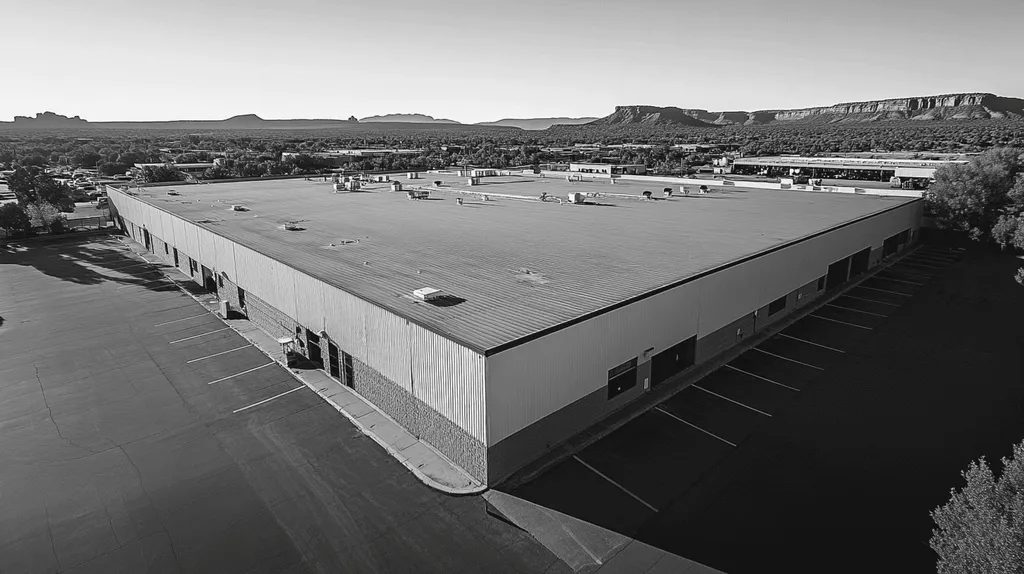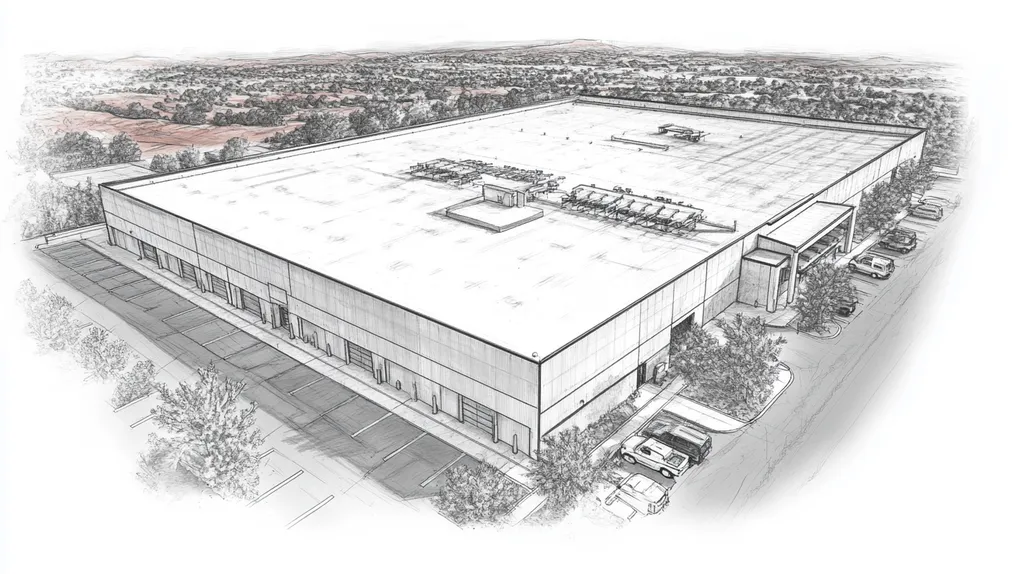Welcome to today’s Battle Royale featuring two roofing heavyweights: “TPO” in the east corner versus “EPDM” in the west!
Tonight’s showdown pits these contenders against each other across six punishing rounds designed to test every aspect of their performance for Commercial Roof System Warranty Coverage.
At stake? Millions in potential costs, decades of building protection, and the critical performance demands of modern commercial and industrial facilities.
Our professional judging panel will evaluate each round on technical merit, real-world performance, and value delivery. After all six rounds, we’ll declare our ultimate champion.
Ladies and gentlemen, facility managers and building owners… it’s time to rumble!
ROUND 1: INITIAL COSTS & INSTALLATION
The financial implications of commercial roofing decisions can impact a facility’s bottom line for decades. With material and labor costs rising annually, choosing between TPO and EPDM has become increasingly critical for property managers. A strategic roofing investment can mean the difference between consistent protection and costly repairs.
Material Expenses
Material selection drives both immediate costs and long-term performance outcomes. TPO materials typically range from $5.50 to $8.50 per square foot installed, representing a moderate initial investment that appeals to budget-conscious facility managers.
EPDM materials generally cost between $6.50 to $9.50 per square foot installed, placing them slightly higher in the initial cost spectrum. However, this premium often translates to enhanced durability and simpler maintenance requirements.
When factoring in regional availability and bulk purchasing options, both materials offer competitive pricing structures. For pure material costs, TPO holds a slight ADVANTAGE.
Installation Complexity
Installation procedures significantly influence project success and warranty coverage. Standard manufacturer warranties typically cover only material defects, making proper installation crucial for long-term performance. (source: Owens Corning Roofing)
TPO installation requires specialized heat-welding equipment and highly trained technicians. This complexity can lead to longer installation times and higher labor costs, particularly in regions with limited qualified contractors.
EPDM installation involves simpler adhesion methods and fewer specialized tools. This straightforward approach reduces the likelihood of installation errors and typically results in faster completion times.
Given the lower technical requirements and reduced risk of installation errors, EPDM demonstrates a clear ADVANTAGE in this category.
Project Timeline
Project duration affects both direct costs and business disruption. TPO installations typically require 25-35% more time than comparable EPDM projects due to precise heat-welding requirements and weather sensitivity.
EPDM installations progress more rapidly due to larger sheet sizes and simpler joining methods. This efficiency minimizes facility disruption and reduces exposure to weather-related delays.
The accelerated timeline and reduced weather constraints give EPDM a definitive ADVANTAGE in project scheduling and completion.
ROUND 1 WINNER: EPDM
ROUND 2: DURABILITY & LIFESPAN
When evaluating commercial roofing systems, durability and lifespan directly impact long-term facility costs and operational stability. A roof failure can cascade into extensive water damage, inventory losses, and business interruptions worth hundreds of thousands of dollars. Understanding how TPO and EPDM perform over decades helps facility managers make informed decisions that protect both assets and operations.
Weather Resistance
Commercial roofs face constant exposure to UV radiation, temperature extremes, and severe weather events. These environmental stressors test the limits of roofing materials and ultimately determine their functional lifespan.
TPO membranes offer excellent heat reflection and UV resistance, maintaining their protective properties even in intense sunlight. However, some older TPO formulations have shown accelerated degradation in extremely hot climates.
EPDM demonstrates superior resistance to temperature extremes and weathering, with minimal degradation even after decades of exposure. Its proven track record in varied climate zones gives EPDM an ADVANTAGE in this category.
Physical Durability
Commercial roofs must withstand foot traffic, equipment maintenance, and potential impacts. Material resilience directly affects repair frequency and maintenance costs over time.
TPO membranes offer good puncture resistance but can become brittle with age. Their heat-welded seams provide excellent strength but may require periodic inspection and maintenance.
EPDM’s remarkable elasticity and tear resistance make it exceptionally durable under normal wear conditions. Its ability to maintain flexibility throughout its service life gives EPDM an ADVANTAGE in physical durability.
Warranty Coverage
Manufacturer warranties provide important protection against material defects and installation issues. Roofing material warranties typically range from 5 to 25+ years, while contractor workmanship warranties generally cover 2 to 5 years of installation-related repairs. (source: Benchmark Inc)
TPO systems usually carry warranties of 15-20 years, reflecting manufacturer confidence in material performance. Coverage typically includes membrane failures and seam separation issues.
EPDM warranties frequently extend to 20-30 years, with some premium systems offering even longer terms. The extended coverage period and comprehensive protection result in an ADVANTAGE for EPDM.
ROUND 2 WINNER: EPDM
ROUND 3: PERFORMANCE FACTORS
As commercial roofing systems evolve, their performance characteristics directly impact warranty coverage and long-term facility costs. Making an informed choice between TPO and EPDM can mean the difference between decades of reliable protection and premature system failure requiring costly replacement. Understanding how these materials perform across key metrics helps facility managers maximize warranty protection while minimizing operational disruptions.
Durability and Lifespan
Three distinct warranty types determine coverage for commercial roofing systems: standard manufacturer’s warranties for product defects, workmanship warranties for installation issues, and extended warranties combining both. Understanding these warranty structures is crucial for protecting long-term roofing investments. (source: Owens Corning)
TPO membranes offer excellent chemical resistance and maintain structural integrity under normal wear conditions. Their heat-welded seams provide superior protection against water infiltration, though regular inspections are essential for warranty compliance.
EPDM demonstrates exceptional elasticity and proven longevity across diverse climate zones. Its simple installation methods reduce the risk of workmanship-related warranty claims, while its established track record supports extended coverage terms.
For its comprehensive warranty options and documented longevity, EPDM claims the ADVANTAGE in this category.
Energy Efficiency
Energy performance significantly impacts both operational costs and roof system longevity. High-performing systems reduce thermal stress and mechanical wear, supporting stronger warranty compliance.
TPO’s highly reflective surface dramatically reduces heat absorption, lowering cooling costs and extending material lifespan. This energy efficiency often translates to expanded warranty coverage options from manufacturers.
While EPDM offers cool-roof variants, its traditional black surface absorbs more heat and can accelerate material aging. This thermal absorption may limit warranty duration and coverage terms in hot climates.
TPO demonstrates clear ADVANTAGE in energy performance and related warranty implications.
Maintenance Requirements
Regular maintenance directly affects warranty validity and long-term performance. Proper upkeep prevents minor issues from escalating into warranty-voiding damage.
TPO systems require specialized inspection protocols and precise repair techniques to maintain warranty coverage. Their heat-welded seams demand professional attention when repairs are needed.
EPDM’s simpler composition allows for straightforward maintenance and repairs. Its forgiving nature reduces the risk of maintenance-related warranty issues, while its proven repair methods ensure continued protection.
Given its easier maintenance requirements and repair flexibility, EPDM takes the ADVANTAGE.
ROUND 3 WINNER: EPDM
ROUND 4: MAINTENANCE REQUIREMENTS
Proper maintenance of commercial roofing systems directly impacts warranty protection and long-term performance. A single maintenance oversight can void warranty coverage and lead to premature system failure, potentially costing facility owners hundreds of thousands in repairs and business disruption. Understanding the distinct maintenance requirements of TPO and EPDM helps property managers protect their warranty coverage while maximizing roof longevity.
Regular Inspection Requirements
Three distinct warranty types govern commercial roofing maintenance: manufacturer product warranties, contractor workmanship warranties, and extended coverage combining both. Understanding these warranty structures helps facility managers maintain valid coverage through proper maintenance protocols. (source: Owens Corning Roofing)
TPO systems require bi-annual professional inspections focusing on seam integrity and membrane condition. These inspections must follow manufacturer-specific protocols to maintain warranty coverage, with particular attention to heat-welded joints and flashings.
EPDM systems typically need quarterly inspections due to their greater susceptibility to mechanical damage and UV exposure. While inspection procedures are straightforward, the higher frequency increases both cost and complexity of maintaining warranty compliance.
Given its reduced inspection burden and simpler compliance requirements, TPO claims the ADVANTAGE in this category.
Cleaning and Preventive Care
Regular cleaning and preventive maintenance directly affect warranty coverage and system longevity. Neglecting these basic tasks can accelerate deterioration and void manufacturer warranties.
TPO’s smooth surface and heat-welded seams simplify cleaning requirements. Monthly debris removal and basic washing typically satisfy warranty maintenance terms while preserving the membrane’s reflective properties.
EPDM requires more frequent cleaning due to its textured surface and tendency to accumulate environmental deposits. Its adhesive-based seams also demand careful cleaning techniques to prevent damage and maintain warranty compliance.
The straightforward maintenance needs of TPO create an ADVANTAGE in cleaning and preventive care.
Repair Procedures
Warranty-compliant repairs demand specific procedures and materials to maintain coverage. Using incorrect methods or unauthorized materials can invalidate warranties and compromise system integrity.
TPO repairs require specialized heat-welding equipment and certified technicians. While this increases repair complexity, it ensures consistent quality and maintains warranty protection when properly executed.
EPDM offers simpler repair options using approved adhesives and patches. This flexibility allows for faster responses to damage while maintaining warranty compliance, provided approved materials are used.
The accessibility and simplicity of EPDM repairs establish an ADVANTAGE in this category.
ROUND 4 WINNER: TPO
ROUND 5: SUSTAINABILITY CREDENTIALS
The commercial roofing industry faces unprecedented pressure to deliver sustainable solutions that meet increasingly strict environmental regulations and certification requirements. With building codes tightening and sustainability incentives expanding, property owners must carefully evaluate roofing choices through an environmental lens. Understanding how TPO and EPDM systems align with green building standards can protect against future compliance issues while maximizing energy efficiency benefits.
Environmental Impact and Energy Efficiency
TPO roofing systems deliver exceptional solar reflectance, with white membranes reflecting up to 85% of solar radiation. This dramatically reduces cooling loads and urban heat island effects, providing immediate environmental benefits and energy cost savings.
Modern TPO formulations incorporate recycled materials and can be fully recycled at end-of-life, minimizing landfill impact. The lightweight nature of TPO also reduces transportation emissions and allows for overlay installations that avoid sending existing roofing to landfills.
EPDM offers excellent durability that reduces replacement frequency and associated environmental impacts. However, its traditional black surface absorbs more heat and increases cooling demands unless specially treated with reflective coatings.
TPO’s superior energy performance and recyclability earn it a clear ADVANTAGE in environmental impact.
Material Composition and Recyclability
CertainTeed offers extensive warranty coverage options that reflect manufacturer confidence in material sustainability and longevity. Their tiered approach ensures proper installation and maintenance of sustainable roofing systems through comprehensive coverage of both materials and workmanship. (source: CertainTeed)
TPO membranes contain no plasticizers or chlorinated ingredients that could harm the environment. Their thermoplastic nature allows for complete recycling into new roofing materials, creating a closed-loop manufacturing cycle.
While EPDM demonstrates excellent longevity, its thermoset composition makes recycling more challenging. The material can be repurposed for other applications but rarely returns to roofing production.
The recyclability and eco-friendly composition of TPO creates an ADVANTAGE in this category.
Green Building Certification Compliance
Commercial properties pursuing LEED, ENERGY STAR, and other green building certifications must demonstrate sustainable material choices and energy performance. Roofing selections can significantly impact certification levels and associated financial benefits.
TPO systems readily contribute to multiple certification credits through high solar reflectance, recycled content, and energy efficiency. Their documented environmental performance simplifies the certification process.
EPDM systems can support certification efforts through durability and reduced replacement needs. However, they typically earn fewer points in energy efficiency categories unless specially modified with cool roof coatings.
TPO’s broader contribution to green building certifications establishes an ADVANTAGE in this area.
ROUND 5 WINNER: TPO
ROUND 6: SPECIALIZED APPLICATIONS
Specialized roofing applications present unique warranty challenges that can make or break a commercial property’s long-term viability. With sustainable building designs, complex mechanical systems, and innovative architectural features becoming standard, traditional warranty coverage may leave dangerous gaps in protection. Understanding how TPO and EPDM warranties adapt to specialized applications can prevent devastating financial impacts while ensuring comprehensive protection for these high-stakes installations.
Green Roof Installations
Green roof systems demand exceptional durability and specialized protections against root penetration, moisture retention, and organic material exposure. Labor and material warranties for these installations must specifically address these unique environmental conditions to provide meaningful coverage. (source: DD Proofing)
TPO membranes offer excellent chemical resistance and heat reflection properties beneficial for green roof applications. However, their warranty coverage often excludes or severely limits protection against damage from root systems and sustained moisture exposure.
EPDM systems provide superior elasticity and proven resistance to biological degradation in green roof environments. Their warranties typically offer more comprehensive coverage for vegetation-related challenges, including specific provisions for root barriers and drainage systems.
For its more adaptable warranty coverage in green roof applications, EPDM claims the ADVANTAGE.
Roofs with High Mechanical Equipment Loads
Commercial roofs supporting extensive HVAC systems, solar arrays, or telecommunications equipment require specialized warranty protection against point loading, vibration damage, and maintenance traffic. These high-stakes installations demand materials and coverage that can withstand constant stress.
TPO systems provide good puncture resistance and heat tolerance around mechanical equipment. Their warranties typically cover basic membrane failures but may exclude damage from equipment vibration or maintenance activities.
EPDM demonstrates superior flexibility and impact absorption around heavy equipment installations. Its warranties generally offer broader protection for mechanical equipment areas, including specific coverage for maintenance-related wear.
Given its more comprehensive warranty coverage for equipment-intensive applications, EPDM takes the ADVANTAGE.
Non-Traditional Roof Shapes
Complex architectural designs featuring curves, slopes, and unusual geometries create unique challenges for roofing material performance and warranty coverage. These specialized applications demand materials that can maintain integrity across varying angles and transitions.
TPO installations on non-traditional shapes require numerous heat-welded seams and custom fabrication. While these connections are strong, their warranties may limit coverage for unusual configurations or extreme angles.
EPDM’s superior flexibility and larger sheet sizes reduce seam requirements on complex shapes. Their warranty coverage typically extends full protection to unusual configurations, provided proper installation guidelines are followed.
The extensive warranty coverage for complex geometries gives EPDM the ADVANTAGE.
ROUND 6 WINNER: EPDM
AND THE WINNER IS…
After six grueling rounds of technical analysis, with millions in property protection on the line, we have our undisputed Commercial Roof System Warranty Coverage Champion… EPDM!
Taking four of six rounds, EPDM dominated with its superior durability, comprehensive warranty coverage, and proven track record across specialized applications. Its knockout performance in installation simplicity, weather resistance, and maintenance flexibility secured this decisive victory.
But don’t count TPO out completely! This innovative contender showed impressive strength in energy efficiency and sustainability credentials. For facilities prioritizing cool-roof performance or pursuing green building certifications, TPO remains a formidable challenger worthy of consideration.
IMPORTANT NOTICE: Every building presents unique challenges based on local climate, structural requirements, and operational demands. This analysis offers general guidance but cannot address all variables that might influence roofing system selection. Property owners should always consult qualified roofing professionals who can evaluate specific site conditions and requirements before making final decisions.
In the high-stakes arena of commercial roofing, victory doesn’t just come from picking the reigning champ – it comes from matching your facility’s specific needs with the right contender’s strengths. Choose wisely, and may your warranty coverage go the distance!
FREQUENTLY ASKED QUESTIONS
Q. What are the initial costs of a commercial roof system?
A. The initial costs for roofing systems depend on material selection and installation complexity. TPO usually ranges from $5.50 to $8.50 per square foot installed, appealing to budget-conscious managers. EPDM, costing between $6.50 to $9.50, offers enhanced durability, making it a worthwhile investment despite higher upfront expenses.
Q. How does the durability of commercial roofs differ?
A. Durability and lifespan are critical when assessing roofing options. EPDM offers superior resistance to severe weather conditions and temperature extremes, extending its operational life. In contrast, TPO maintains excellent heat reflection but may degrade faster under extreme sunlight, highlighting the importance of material selection based on climate.
Q. What are the key performance factors for a commercial roof?
A. Performance factors influencing warranty coverage include durability, energy efficiency, and maintenance needs. TPO excels in energy efficiency due to its reflective surface, promoting lower operational costs. In contrast, EPDM provides easier maintenance and longer-lasting performance under various climate conditions, critical for preserving warranty compliance.
Q. How do maintenance requirements affect commercial roofing warranties?
A. Regular maintenance is essential for preserving warranty coverage. TPO requires biannual inspections, focusing on seam integrity. EPDM needs more frequent checks every quarter, as its textured surface can accumulate debris. Understanding these requirements helps ensure compliance and long-term roof performance without incurring additional expenses.
Q. What are the sustainability credentials of commercial roofing options?
A. Sustainability is increasingly crucial in roofing selection. TPO roofs reflect up to 85% of solar radiation, reducing cooling loads. In contrast, while EPDM provides durability, its traditional black color absorbs heat, impacting environmental efficiency. Evaluating each option’s sustainability aligns with modern green building practices and regulations.
Q. Can commercial roof warranties cover specialized applications?
A. Specialized applications require tailored warranty coverage. EPDM generally offers better protection for installations like green roofs due to its resistance to degradation from moisture and roots. TPO, while effective, often has limited coverage for unique applications, emphasizing the need for careful material selection based on project requirements.
Q. How do TPO and EPDM technologies influence commercial roof longevity?
A. Advancements in roofing technologies enhance longevity. TPO’s reflective properties improve energy efficiency, aiding in reduced wear over time. EPDM’s remarkable elasticity and resistance to environmental factors contribute to extended service life. Understanding how these materials adapt to evolving conditions helps manage long-term roofing investments effectively.

